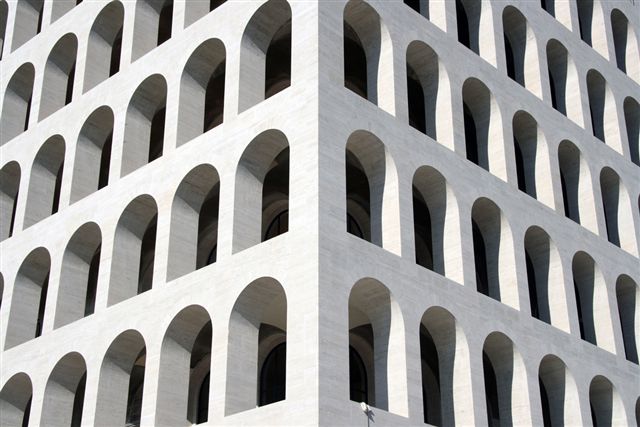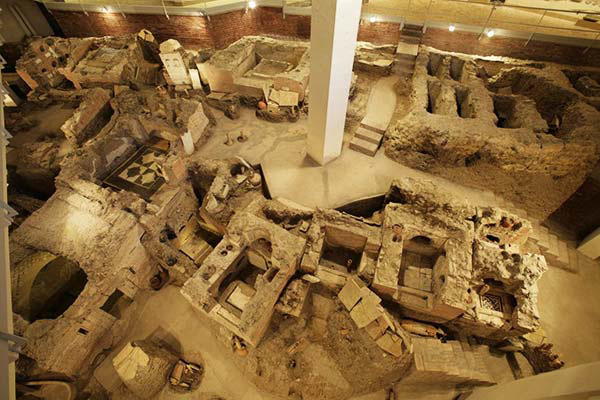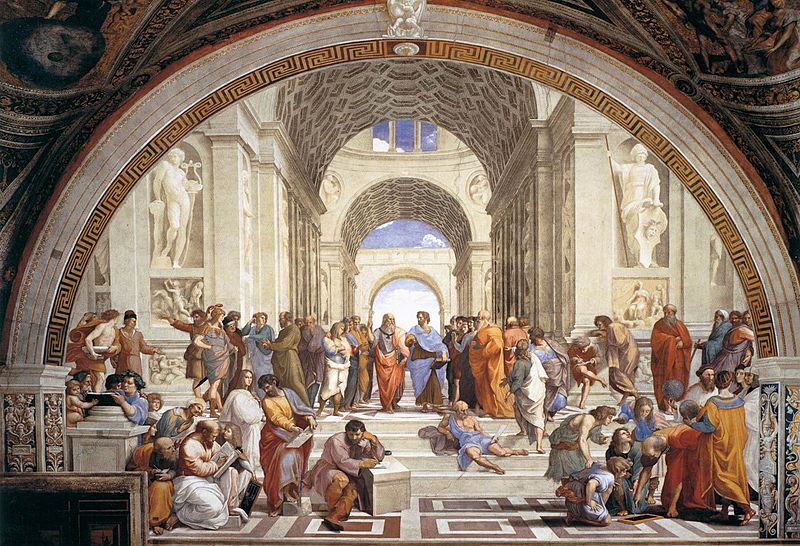Did you know there were two Colosseums in Rome? One is round, ancient and world famous. The other is square, 20th century and to be found in the most modern district of the city: EUR.
Glittering business buildings and wide tree-lined boulevards laid out in a grid system. Corporate headquarters, banks and ministeries dominate this strange and unexpected suburb in south Rome. EUR also includes some of the most startling modern architecture in the Italian capital.
Work on the new quarter began in 1935 under dictator Benito Mussolini. It was intended for a Universal Exhibition (Esposizione Universale Romana) scheduled for 1942 to celebrate twenty years of Fascist Italy. The planned exhibition never took place due to World War Two. Only some of the plans had been finished, and after the war work continued in a modernist style but without the same political agenda.
Today you can note three distinct phases of architecture in EUR: the austere, monumental style beloved by fascism, 1960’s style office blocks or government buildings set in large gardens and parks and ultra-modern contemporary design projects from some of the world's leading architects.

Without doubt the most dramatic and representative building from the fascist era is the Palazzo della Civiltà di Lavoro, a tall and striking homage to the achievements of the Italian race, especially the ancient Romans. The Palazzo was designed by the architects Giovanni Guerrini, Ernesto Bruno La Padula and Mario Romano and constructed between 1938 and 1943. The many arches of the building were meant to mirror ancient Rome’s most famous arena and led to the new building being dubbed the 'square Colosseum'. The building is currently closed for restoration. It is due to reopen in 2011 as a major museum celebrating Italian Fashion and Design. Visitors to EUR will find a small cache of interesting museums, most of which are rarely visited. Hidden between two massive ministerial buildings (Telecommunications, The Environment) is the Museum of Roman Civilization where you’ll find a fascinating scale model of Imperial Rome among a host of other exhibits describing the history of the city. The building also houses a planetarium. The neighbouring National Museum of Prehistory and Ethnography features a superb collection of African, Chinese and American handicrafts. Other architectural landmarks from the fascist era include the massive domed basilica dedicated to Saint Peter and Saint Paul, the monumental National Archive building with its 100 columns and The Palazzo dei Congressi (Congress Palace), a low-domed building designed to reflect the style of the Pantheon.
EUR is about to have a new Congress Centre thanks to the stunning design by Rome-born architect Massimiliano Fuksas. The new centre is essentially a vast oblong translucent building made mostly of glass. A 3,500 square meter steel and teflon cloud will be suspended inside the main auditorium. When the cloud, supported by a network of steel cables and suspended between the floor and the ceiling of the main hall, is lit up, the building will seem to vibrate. The construction also changes completely depending on the viewpoint of the observer. In addition the centre will also contain three halls and spacious foyer, cafè and restaurant areas, covering a total multi-functional space of 15,000 square meters. A grand stairway will link the building to the outside plaza. Former Rome mayor Walter Veltroni has hailed what has become known as the Cloud Centre as “one of the most beautiful projects in the world”. Current mayor Gianni Alemanno has pledged the centre will be finished by early 2011. Modernist architecture flourished in the district in the 1950’s and 60’s.The round UFO-shaped building near EUR's large lake is a multi-purpose sports arena designed by architects Pierluigi Nervi and Marcello Piacentini for the 1960 Summer Olympics. In 1999 the 11,000-seater arena was restructured and renamed after the main sponsor Lottomatica. It is now the home arena for the professional basketball team Lottomatica Roma. The building is also a popular concert venue. Nearby is a 45-meter high tower built to house the district’s water reservoir. A top the tower is a restaurant with a breathtaking view. The tower, another of Nervi’s designs for EUR, is nicknamed the mushroom for its striking form. At one end of the lake is the massive glass skyscraper housing the headquarters of Italian oil and gas multinational Eni which was built in 1962. Nearby, work is about to begin on a huge largely residential complex designed by internationally renowned Italian architect Renzo Piano. The project, that will rise right in front of Fuksas’ Cloud congress centre on Viale Europa, endeavours to be a prime example of sustainable architecture for the living modern city. What Piano has described as his “magic box” should also help breathe life into the district which in the evening, after the shops and offices have closed, can be eerily quiet. Until recently the historic fairgrounds and amusement park at Luneur, which included the largest big-dipper ride in Europe, regularly attracted thousands of visitors and brought life and colour to evenings in EUR. But in 2008 after more than forty years the lights were switched off for the last time. One of the few bright spots on the EUR nightscene is Spazio Novecento, a vast high-tech disco and entertainment complex located inside the historic Palazzo dell’Arte Antica (Piazza Guglielmo Marconi 26/B). Regularly featuring some of Europe’s top djs, Spazio Novecento has quickly established itself as one of the trendiest nightspots in all Rome. The eerie, metaphysical quality of EUR’s dark deserted streets and massive buildings at night was an attraction for some. Legendary Italian director Federico Fellini was a frequent visitor and chose the district as the setting for scenes in classic films like La Dolce Vita and Boccaccio 70. What does the future hold for EUR? One intriguing possibility came to light in February when Formula One commercial supremo Bernie Ecclestone announced he was considering using the business district as a venue for a Grand Prix street circuit. “ Rome is a unique setting and I could give it a race by 2013,” Ecclestone wrote in a letter to Rome Mayor Gianni Alemanno.





